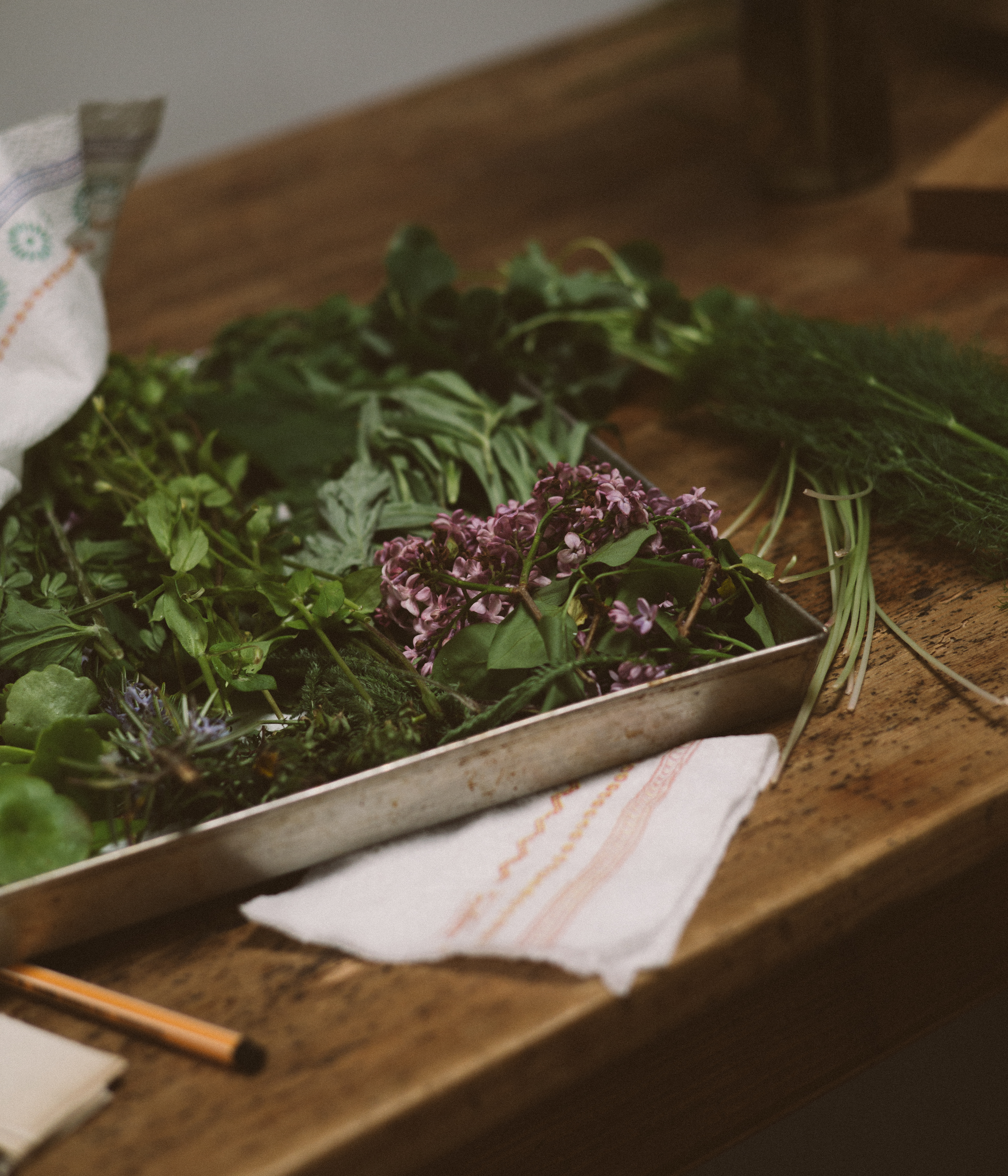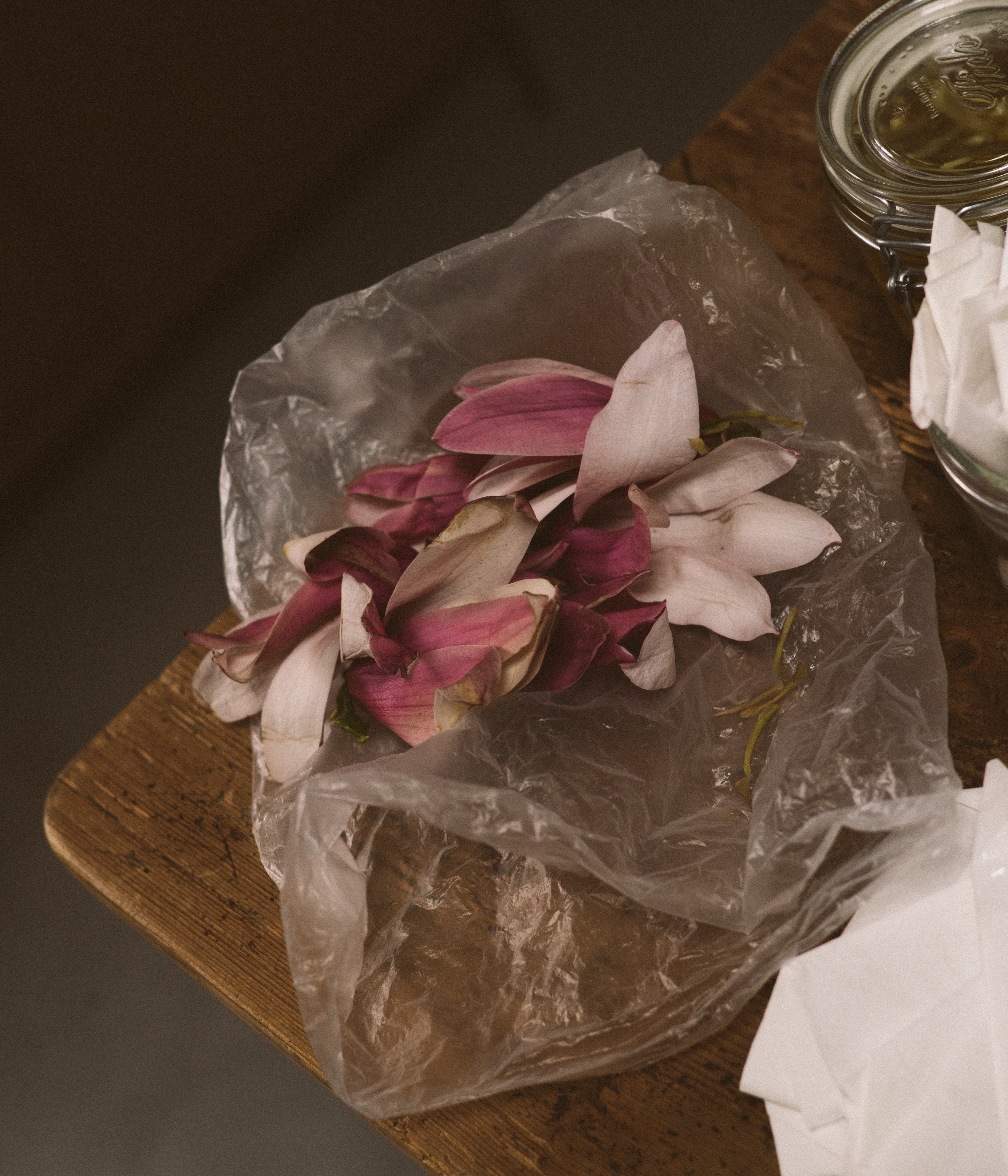Foraging with Penelope Volinia

Since I can remember, my mom and I have always foraged for nettles, linden flowers to dry and make tea, mulberries and blackberries for jams. I was extremely curious about the plants that could land on my plate. For years I was wandering around with my mom picking mint that we were going to dry in paper bags, to store for tea during the year. One spring, when I moved to Venice I was so confused yet amazed to see a huge plum tree full of fruits that no one seemed to be noticing. So I collected the plums and made around a dozen jars of jam.
There is a strong connection between being aware of the food growing around us and the knowledge of where our food is coming from. It is connected to recognize the food at different growing stages, knowing that there is a seed that will leave space to a sprout, followed by stem, leaves, then buds, flowers, fruits and seeds again. And also the roots remain when you do not see the plant anymore. It is about knowing that the food follows seasons’ rhythm and has its own cycle.
“Foraging takes time. It is a matter of a search for a better connection with nature.”
Last year I found myself in a very particular living situation in Lithuania, that led me to notice this slow and incessant cycle. Because I am quite lazy, thinking to forage and find some edible herbs was a good excuse to go outside and lose myself in the woods behind the house. It also helped that the friends that I was living with were a great source of inspiration and knowledge, so I started to study a bit more the landscape that was surrounding me.
Foraging takes time. It is a matter of a search for a better connection with nature. I have to study through books and the internet but in the end the final test is going outside and observing what surrounds me. It is exciting how landscape, corners of land change over the seasons, but also over the weeks. You can even start noticing the change day by day, going out and paying attention to the little details. Listen and look closely.

RULES OF THE FORAGER:
– Never eat anything unless you can name it and are 100% sure it is safe.
– Do not pick endangered species.
– Never take more than you can use
– Always leave enough for the remaining population to easily recover, unless it is an invasive plant. Of those you can take as much as you can use. So, again, know your plants.
– Do as little damage as possible to the plant and its environment. Leave no trace behind and respect nature.
– Always remember that the purpose of foraging is to better connect with nature.
– Never pick in places subjected to pollution, avoid foraging near roads or polluted areas.
– Always ask for permission to forage on private land.
Dandelion Capers in Oil


Dandelion flower buds
White wine
Vinegar
Salt
Olive oil
Clean the dandelion flower buds.
Heat in a small pot the vinegar and add a tablespoon of salt.
When the vinegar starts a gentle boil, add the buds and cook for 5 min on a low heat.
Strain and let the buds dry from the steam on the colander. (You can reuse the vinegar to make quick pickled onions.
Add to a big jar two onions sliced thinly, one tsp of sugar or honey and spices such as fennel seeds and black pepper).
When the buds are dry and have cooled down, put them in a jar and cover with olive oil.
They can be consumed after a few hours and they stay good in the fridge for a few weeks.
Images by Daniel Civetta


